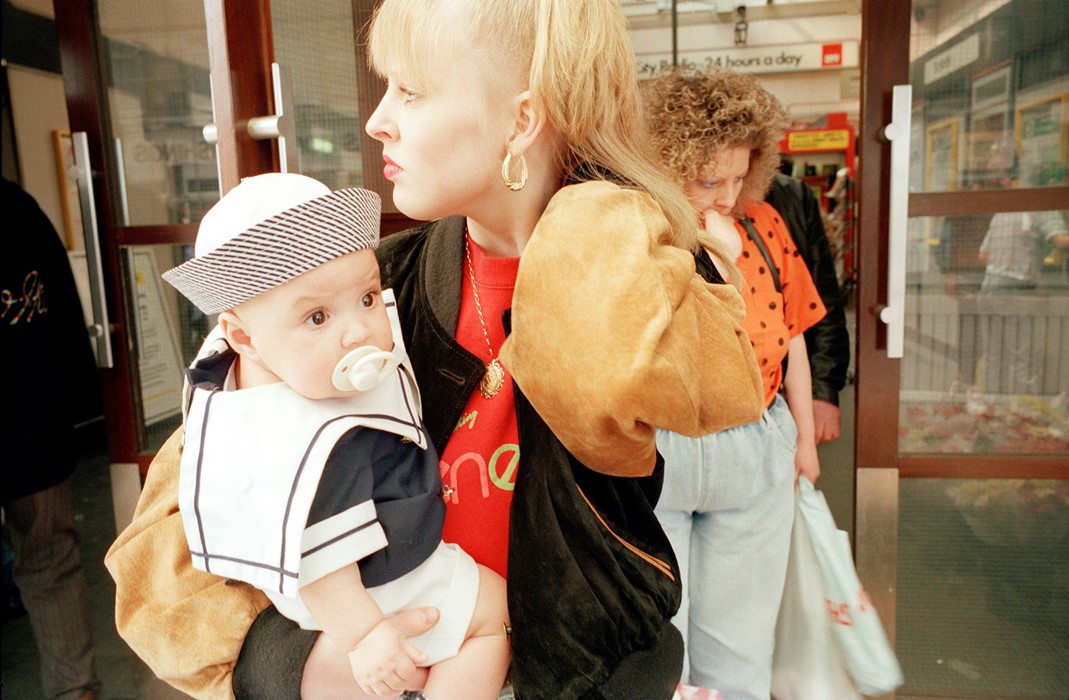Tom Wood reflects on his years documenting the shoppers of Liverpool’s Great Homer Street market
For British photographer Tom Wood, taking photographs is a labour of love – a deeply personal exercise that’s seen him intimately document the people of Liverpool for three decades. “I didn’t think I had a right to steal someone’s picture and make a career out of it,” explains Wood. “If I was a nobody, I figured I could take photographs out of love. It was an equal exchange. Martin Parr once told me that I was too nice to be a photographer. People would often ask for a copy of their photo so I’d note down their address to send one. I spent my life sending off prints to people!”
It was between 1978 and 1999 that Wood spent his Saturday mornings photographing Liverpool’s Great Homer Street Market. For Wood, it was as much an exercise in preserving the market’s unique identity – cemented by a letter from Manchester’s Documentary Photography Archive that stated that Wood was making ‘records of life today for the future’ – as it was an exploration of the women that frequented it. From mothers pushing their daughters, to friends and whole families coming together – Wood used his lens to capture candid photographs that depicted the real intergenerational relationships of the market’s shoppers each Saturday as they searched high and low for the best bargains on offer, haggling over everything from knickers to peep-toe mules.
Attending week after week, over time Wood became one of the market’s well-known faces, and it’s his familiarity with his subjects that allowed him to truly capture both the characteristics and idiosyncrasies of Great Homer Street. Here, Wood shares the story of Great Homer Street.
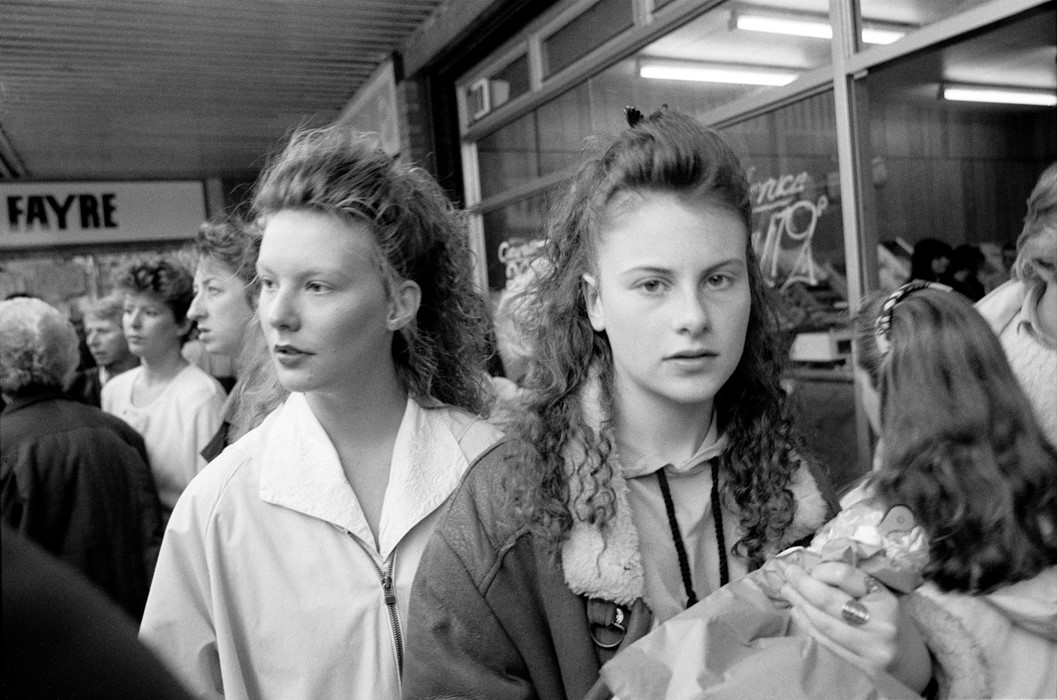
On first impressions…
“I’d visited Great Homer Street once in the early 1970s with a girlfriend. I’d never seen a market like it, it spanned both sides of the road for a long way, mainly stocking secondhand goods in those days. I bought two wonderful double-breasted Worsted wool three piece suits, both like new. I thought that I would love to go back there, then by sheer chance I ended up working in Liverpool seven years later in 1978. It took some time to get to know Merseyside. I knew the market was there but I didn’t have the courage to go and photograph it straight away. At that point I mainly shot portraits, I hadn’t captured candid images before. I made a few visits in the early 80s, then it was from 1987 onwards that I captured the market seriously.”
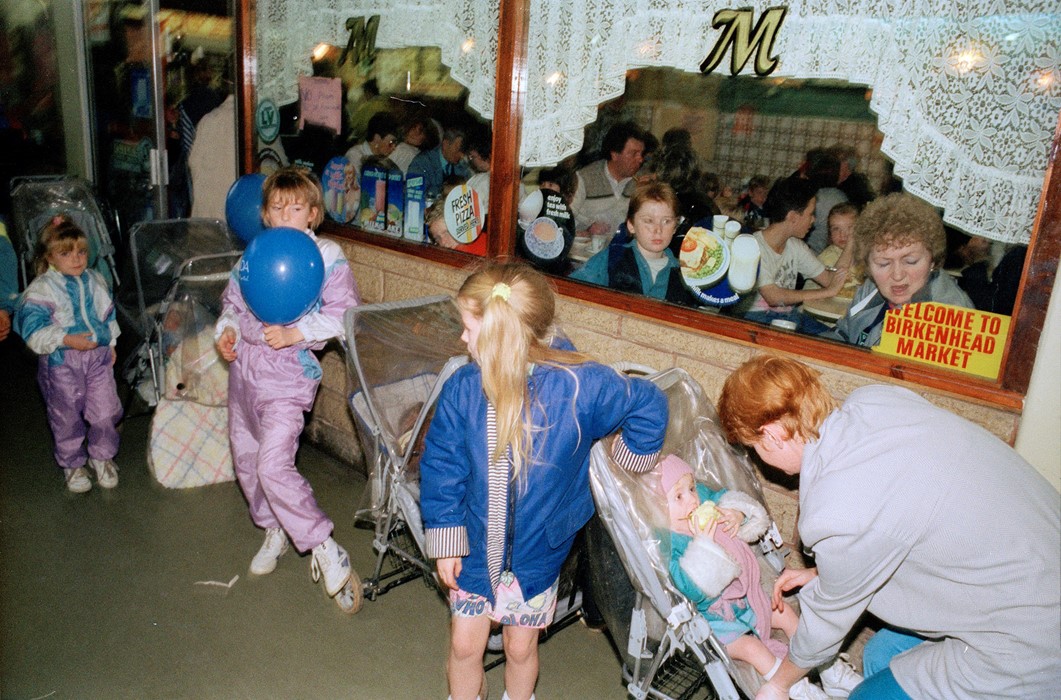
On capturing the people…
“It was the mix of faces that fascinated me most. You’d see a line of women walking towards you who all had virtually the same face – a mother, her daughter, and her daughter. They might be with their cousins, too. I photographed people around the shops in the centre of Liverpool too, but they were different. They dressed and acted in a certain way and they were less open, they had their guard up. People were a lot more open in the market. They were mostly women who knew each other because they were there every week. It was much more informal. There are some photographs in which people are looking at the camera. One or two would see me taking the picture, but the looks were fairly neutral. Because I went back to the market week after week, I slowly became part of the scenery.”
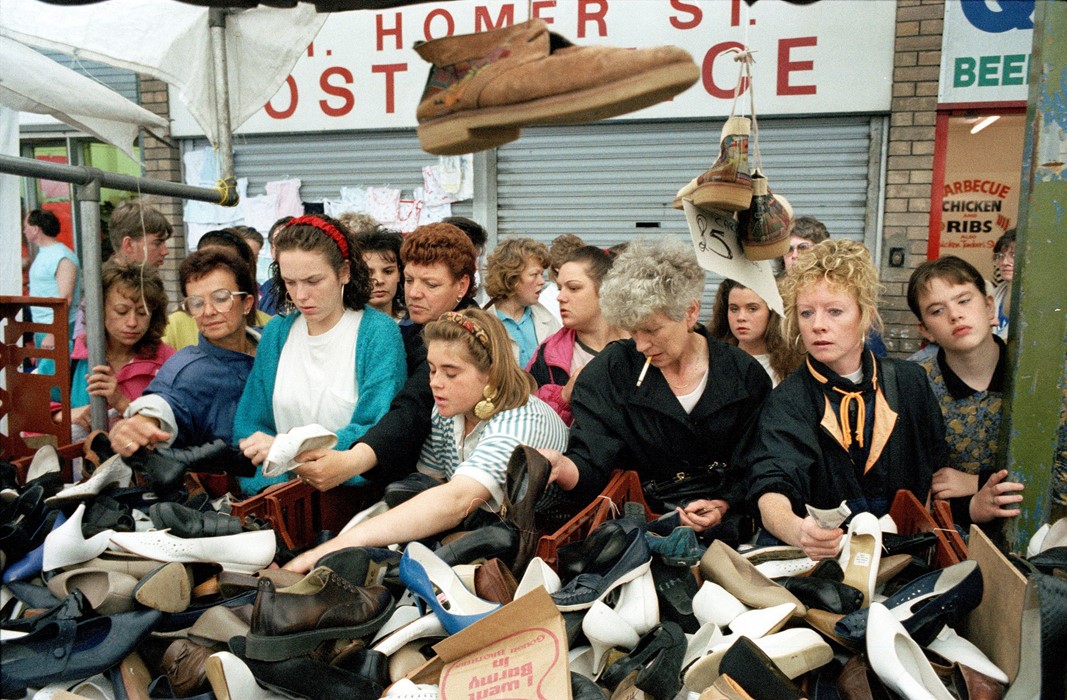
On the relationships that were born…
“Early on I told the stallholders what I was up to in case anyone was suspicious that I might be with the Department of Labour and Employment or Trading Standards. I met a guy called Brian and he was a key figure at the market – luckily he liked me, so things fell into place with the others. People would come find me and say, ‘Our Jackie is getting married in July, will you do the pictures?’ So I ended up taking a lot of wedding photos, too. I only ever charged them the price of the film and I would try and get some photos for myself at the same time. It was definitely my way of giving something back to the community. A lot of people at the wedding would be the same people from the market, so they’d recognise me and it would be easy for me to photograph them next time I saw them there.”
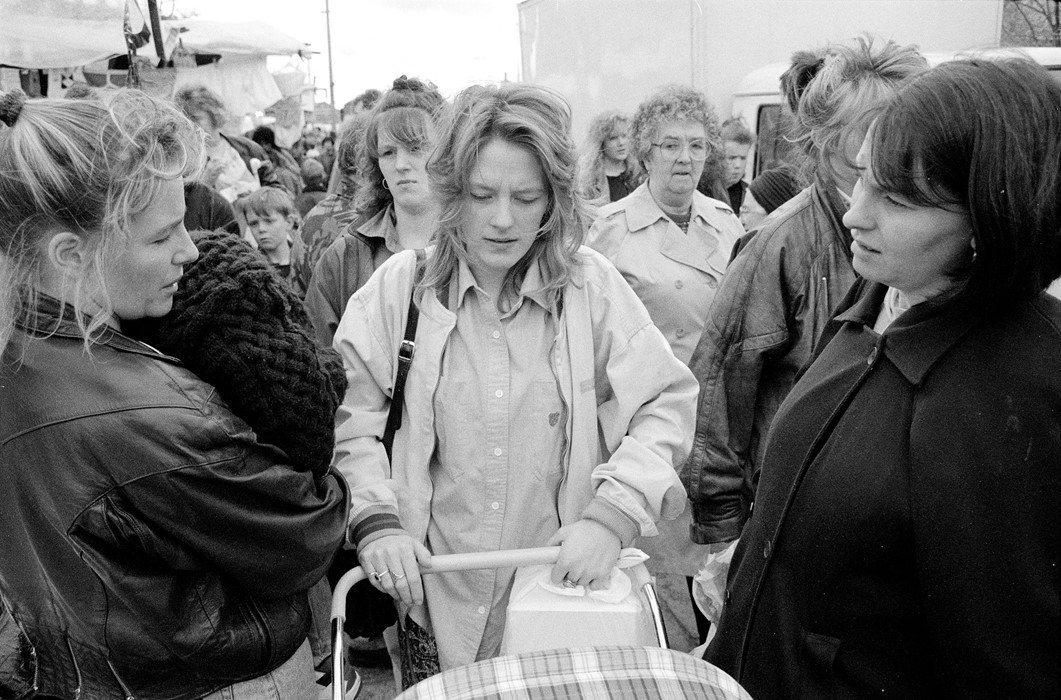
On documentary photography…
“People talk about documentary photography a lot, but for me it is about exploring perceptions and vision. When I would try and photograph someone without them seeing me, they could always sense I was doing it. I was interested in that sense people have when they are being stared at. If I sensed someone didn’t want to be photographed, I wouldn’t take the picture. Some people just tolerated me. If I found a really great family that I wanted to take a lot of photos of, I’d ask for their permission, but people change their mannerisms and their expressions when they know they are being watched. Ludwig Wittgenstein talks about it in his work. He talks about a family all having the same face, and how the meaning is inherent. He knew it was significant, but he couldn’t put it into words. I’m really interested in the work of American physicist Richard Feynman too, he talks about how he does an experiment not to prove what he knows, but to prove what he doesn’t know. It’s hard for me to put it into words, even now. My impetus was never to document anything. I was looking at my surroundings and they affected me. I saw things I was stimulated by, and I captured things that excited me.”
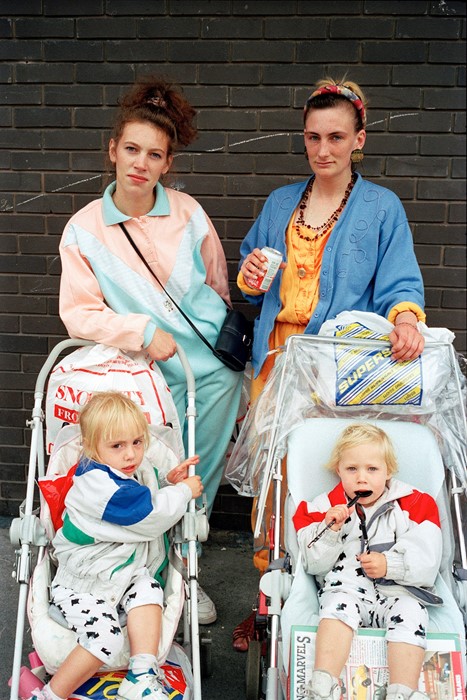
Women’s Market by Tom Wood is out September 13, 2018, published by Stanley/Barker.
